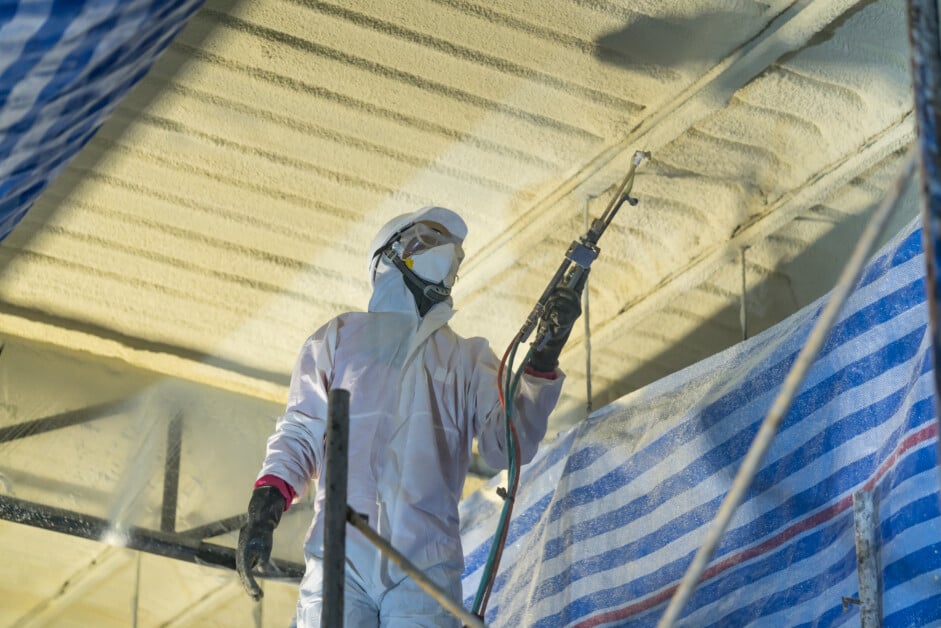Insulating industrial buildings is crucial for maintaining a safe, efficient, and productive environment. Industrial building insulation involves using materials and techniques to control temperature, minimize energy consumption, and reduce noise. Whether it’s a manufacturing facility, warehouse, or processing plant, proper insulation can have a significant impact on the building’s overall performance. In this article, we’ll explore the key aspects of industrial building insulation, including its benefits, types, and applications.
Why Industrial Building Insulation Matters
Energy Efficiency
One of the primary reasons to insulate industrial buildings is to enhance energy efficiency. Proper insulation reduces the amount of heat lost or gained through walls, roofs, and other structures, leading to lower heating and cooling costs. This is especially important in industrial settings, where maintaining a specific temperature is often critical to the operations and processes taking place within the facility.
Climate Control
Industrial buildings, such as warehouses and factories, often require precise climate control to ensure the quality of products and materials. Insulation helps maintain consistent indoor temperatures, protecting sensitive equipment and goods from damage due to extreme temperatures or humidity levels.
Noise Reduction
Industrial environments can be noisy due to heavy machinery, equipment, and ongoing processes. Insulating walls, ceilings, and floors can help reduce noise transmission both inside and outside the building. This not only creates a more comfortable work environment for employees but also helps comply with local noise regulations.
Types of Insulation for Industrial Buildings
Fiberglass Insulation
Fiberglass insulation is one of the most common types used in industrial buildings. Made from fine glass fibers, it offers excellent thermal resistance and is relatively affordable. Fiberglass batts, rolls, or loose-fill can be used in walls, ceilings, and floors to prevent heat loss and control temperature.
Spray Foam Insulation
Spray foam insulation is highly effective at sealing gaps and cracks, making it ideal for industrial buildings where air leakage can be a concern. It expands upon application, filling cavities and providing a high R-value, which measures thermal resistance. Spray foam insulation is particularly useful in areas with irregular shapes or hard-to-reach spaces.
Rigid Board Insulation
Rigid board insulation, typically made from materials like polystyrene or polyisocyanurate, provides high thermal resistance and durability. It is commonly used in industrial buildings for insulating roofs, walls, and foundations. Its high compressive strength makes it suitable for areas where mechanical loads are present, such as roofing systems and exterior walls.
Reflective Insulation
Reflective insulation is used to reduce radiant heat transfer, which is particularly useful in hot climates or buildings with large amounts of sun exposure. It consists of a reflective surface, usually aluminum foil, that reflects radiant heat away from the building, helping to maintain cooler indoor temperatures. Reflective insulation is often used in combination with other insulation types to maximize energy efficiency.
Key Benefits of Industrial Building Insulation
Lower Energy Costs
Effective insulation helps industrial buildings maintain desired temperatures with less energy, reducing heating and cooling costs. This leads to significant savings over time, particularly in large facilities with extensive HVAC requirements.
Enhanced Comfort and Productivity
A well-insulated building provides a comfortable working environment by maintaining consistent temperatures and reducing noise levels. This can boost employee morale and productivity, contributing to a more efficient and effective workforce.
Improved Durability and Protection
Insulation can help protect the building’s structural components from temperature fluctuations, condensation, and moisture. This protection extends the life of the building materials, reduces maintenance costs, and prevents damage such as mold or corrosion.
Environmental Impact
Insulating industrial buildings contributes to environmental sustainability by reducing energy consumption and greenhouse gas emissions. Facilities that use less energy have a smaller carbon footprint, aligning with corporate sustainability goals and environmental regulations.
Applications of Industrial Building Insulation
Industrial building insulation is applied in various sectors, including:
- Warehouses: Insulating walls, roofs, and floors to maintain optimal storage conditions for goods and materials.
- Manufacturing Plants: Insulating production areas to protect equipment, maintain climate control, and reduce noise pollution.
- Data Centers: Insulating to manage heat loads generated by servers and electronic equipment, ensuring efficient cooling and energy use.
- Cold Storage Facilities: Using insulation to prevent temperature fluctuations and maintain specific temperature ranges for perishable products.
Industrial building insulation is an essential investment that provides a range of benefits, from energy savings and enhanced comfort to improved durability and environmental impact. By selecting the right insulation materials and techniques, businesses can optimize their facilities for efficiency, safety, and sustainability. Whether in warehouses, manufacturing plants, or data centers, effective insulation plays a vital role in maintaining operational excellence in today’s competitive industrial landscape.
George J. Newton is a business development manager and content writer for Write my case study and Thesis writing service. He has a very patient wife of over ten years, who is his biggest supporter. He also contributes his work to websites such as Next Coursework.






